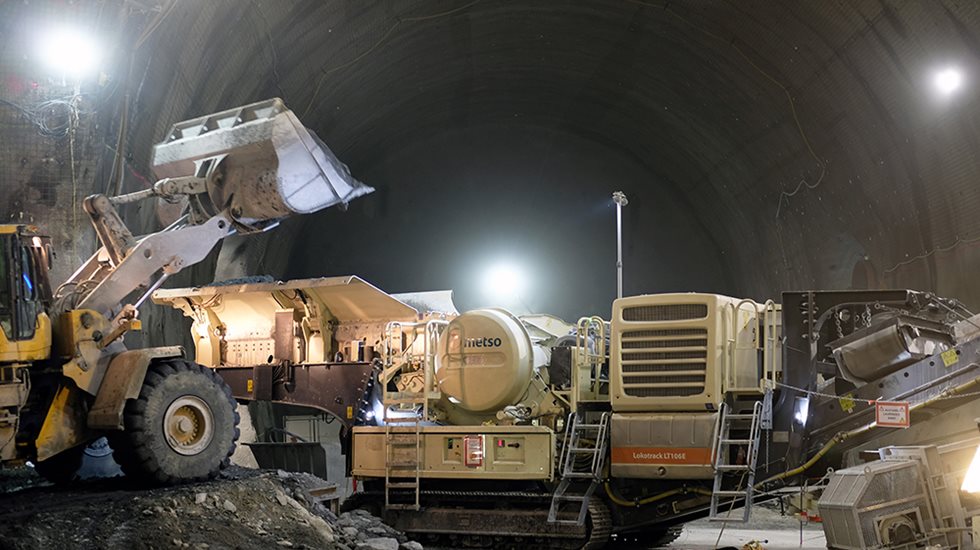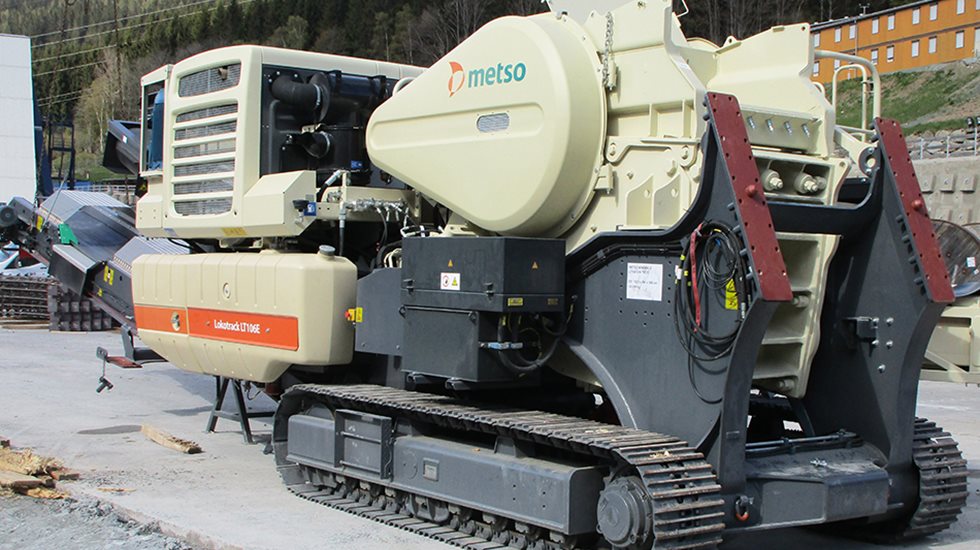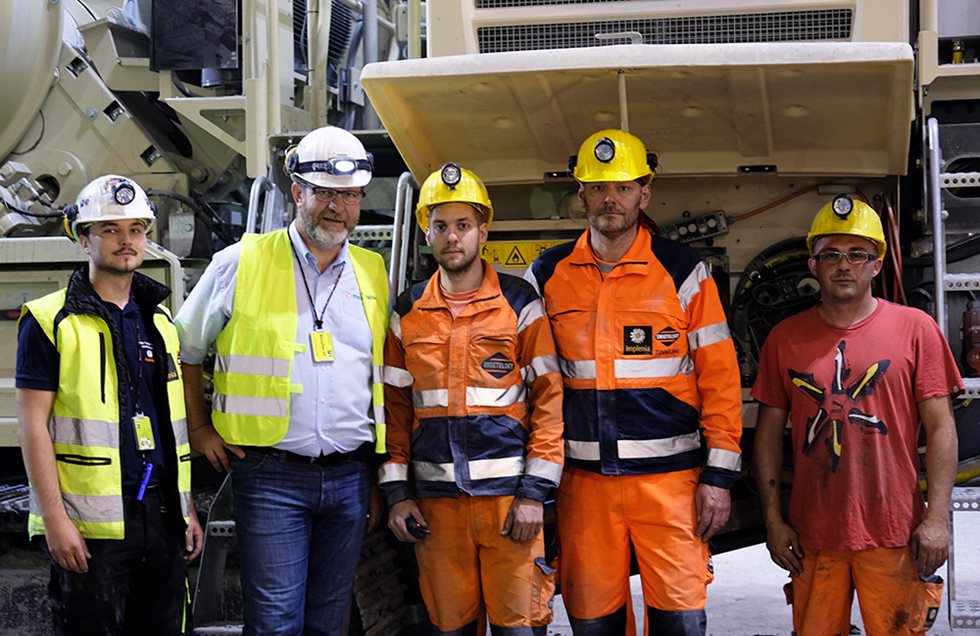Being fully electric, the LT106E is fed by wheel loaders, which carry the blasted materials from both tunnel heads. The feed is 0–600 mm in size, and the task of the C106 jaw-operated plant with an 85 mm closed side setting is to make sure that all the rocks being elevated are smaller than 150 mm.
Two big elevators lift the crushed materials up 400 meters to ground level, with each batch weighing 65–70 tonnes.
The extracted materials to be crushed contain a variety of gneiss and slate, and are very abrasive, too.
Promising start to a 1.2-million-tonne job
After two months of crushing operations, Christoph Koman is confident about the capability of Metso’s Lokotrack to handle the required amount of 1.2 million tonnes. The start has been promising, with no extra stoppages.
“We appreciate the reliability and crushing capacity of our Lokotrack. The unit runs smoothly, meeting our need of approximately 8–10 hours per day, and it meets the planned capacity of 300 tonnes per hour. The full unit capacity will be needed by next year at the latest, when we have to process the biggest material volumes.”
“Metso’s LT106E jaw plant has proven to be a reliable crushing plant causing no stoppages in our materials processing,” says technician Christoph Koman from Swietelsky Tunnelbau.
“This jaw plant with IC steering is easy to use for our operators. The adjustable hydraulic crusher setting is also a big plus – we do not need to stop crushing while adjusting the jaw. This adds to our operational uptime,” Koman adds.


